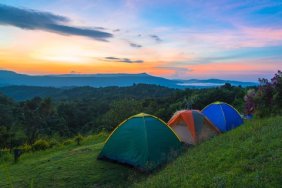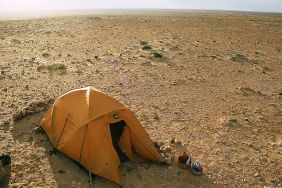 When it comes to camping, and the gear associated with overnight stays in the woods, there are several schools of thought. Some prefer spacious tents, others, a compact shelter. Then there are those rare minimalists who take only what they need, even when it comes to shelters. These die-hard, ambitious folks will bring along small, backpacking tents, simple tarps, or even bivy sacks. Keep reading to learn more about these overnight shelter solutions.
When it comes to camping, and the gear associated with overnight stays in the woods, there are several schools of thought. Some prefer spacious tents, others, a compact shelter. Then there are those rare minimalists who take only what they need, even when it comes to shelters. These die-hard, ambitious folks will bring along small, backpacking tents, simple tarps, or even bivy sacks. Keep reading to learn more about these overnight shelter solutions.
Bivy sacks are essentially waterproof, breathable protectors for your sleeping bag. In other words, they’re sleeves that look like sleeping bags for your sleeping bag. They are usually comprised of a waterproof floor and an upper layer that’s waterproof and breathable. They’re really not that much different than tents, in terms of material and function; they just come in a smaller, more compact design. Some models are simply just larger forms of sleeping bags with a face hole, while others implement pole-supports for increased space for your head, as well as bug nets.
The main benefit of bivy sacks is their lighter weight (usually around 1 pound), which can shed several pounds from your load. When embarking upon long treks during milder months, this can be invaluable. If rain isn’t a big issue and you plan on being in the woods for an extended period of time, space saved by bringing along a bivy sack, rather than a tent, can be used for other helpful items that you might have otherwise been forced to leave at home.
There are some hindrances, however, that you’ll face should you choose to go with a bivy sack instead of a tent. The most obvious being limited movement, due to their confined design. They offer no space to sit up, which can be frustrating. Also, if bugs are an issue, you have no room to change and will be forced to change outside before crawling into the bivy sack, forcing you to endure the bugs a bit longer.
There are a few companies that make quality bivy sacks, as well as some companies that make basic models for emergencies or casual use. REI, for example, has its Minimalist model, which falls within the “large sleeping bag” category. This model, ranging from $100 to $110, offers bug netting and internal clips for your sleeping bag, which prevent you from shifting around too much while you sleep. Outdoor Research’s Alpine bivy model utilizes pole supports to create more head room. This model costs roughly $240 and incorporates bug netting, as well as a small internal pocket for valuable gear like wallets, phones, and car keys.
If you consider yourself a weight-burning backpacker, or you’re just looking for ways to reduce the weight you carry during long trips, bivy sacks might be the solution you’ve been overlooking. While they may not be ideal in thunderstorms or extreme cold, bivy sacks are a space-saving, lightweight shelter option that anyone who doesn’t need a whole lot of sleep space would do well to check out this season.








